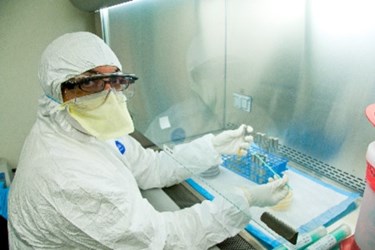Accelerated Bacteria Separation: Taking Food Contamination Detection To The Next Level
By Isaac Fletcher, contributing writer, Food Online

A new process developed at the University of Maryland may help the food industry prevent recalls caused by contaminated products making it to market.
Obviously, food contamination is a constant concern for every food processing operation. With numerous, highly-publicized recalls taking place in the last few months, the presence of unwanted chemicals and bacteria in food products has received a lot of attention lately. The current industry practice for detecting contamination involves placing a sample of the food product in a bag with liquid nutrients and incubating it for 24 hours in order to allow the bacteria to reproduce. On its own, this technique does not detect contaminants, but, rather, separates pathogens in food to allow other technologies to detect them.
Although this detection method can be effective, food products that spoils quickly, such as fresh produce, present problems if testing is not completed quickly and efficiently. Many processing companies are forced to ship produce before test results come back in order to avoid losing product to spoilage. If a contaminated product goes to market, people get sick, a recall must be issued, and the company suffers significant losses.
Are Your Prepared For The High Cost Of A Food Recall?
To help address this issue, researchers at the University of Maryland have developed a process that accelerates the separation of bacteria from food products. The process uses a chemical repellent to force bacteria to self-separate, eliminating the need for sample enrichment. The research team says that the separation timeline could be reduced or completely eliminated, which would be greatly beneficial to the food industry.
Gayatri Varma, executive director of the Office of Technological Commercialization (OTC), emphasizes the process’s potential for large scale application for contamination detection, stating, “Our focus is on the commercial potential for [the process] to be something the [food] industry wants.”
Head of the research team, Professor Javier Atencia-Fernandez, says, “People have reviewed the idea and have seen the results, so there is a real potential impact.” Atencia-Fernandez and his team, aided by help from the OTC, plan to see the project through to market and commercialization.
